15 Types of Black Birds in Idaho (With Pictures)
Last Updated on
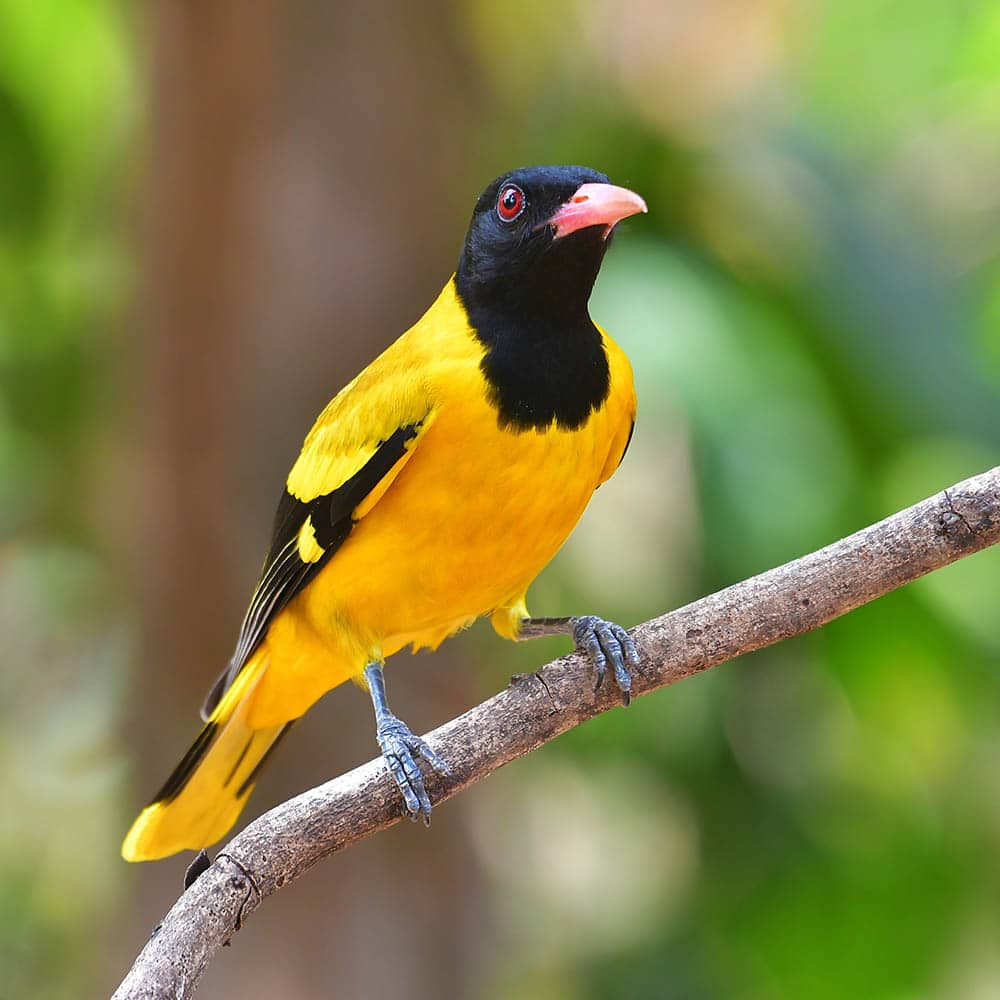
Many black birds can be fun to find in the wild, including the variety known as blackbirds. Some are more colorful than you might think! However, many farmers consider blackbirds as pests, and they can also be a hassle for people with backyard feeders when they push out smaller songbirds. Keep reading as we list several blackbird species that you can find in Idaho.
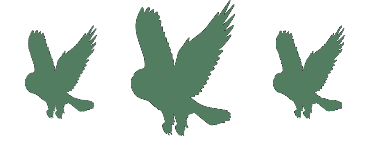
Top 15 Types of Black Birds in Idaho:
1. European Starling
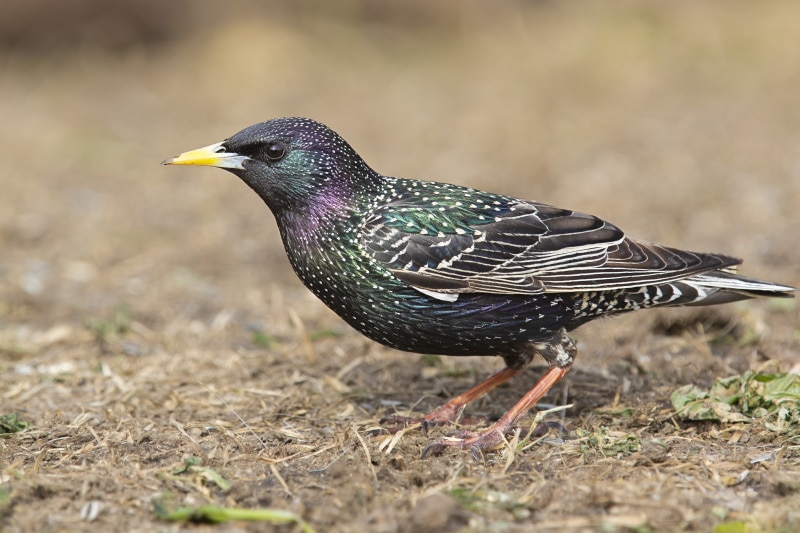
| Length: | 7.9 – 9.1 inches |
| Wingspan: | 12.5 – 15.8 inches |
The European Starling is an attractive bird with a long yellow beak and purple, blue, and green highlights over the black feathers. It also has many small white spots, especially on the head. It’s an invasive species that you can find all over the United States, including Idaho. You will usually see these birds in groups perched on the tops of trees or telephone poles.
2. Red-Winged Blackbird
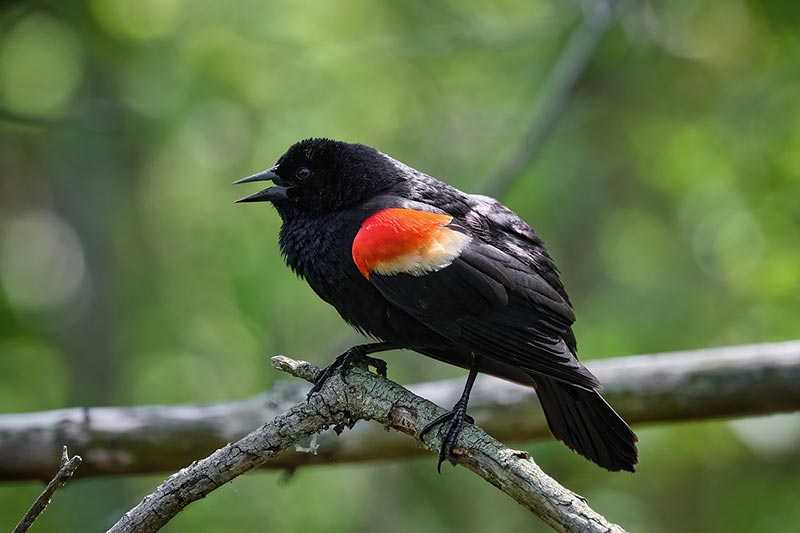
| Length: | 6.7 – 9.1 inches |
| Wingspan: | 12.2 – 15.8 inches |
The Red-Winged Blackbird is a favorite among birdwatches everywhere. It has a mostly black body with a small red-and-yellow patch on the shoulders. It’s common in the summer, and you’ll often see it on telephone poles. If there is a nest nearby, it will defend it, even attacking humans.
3. Western Meadowlark
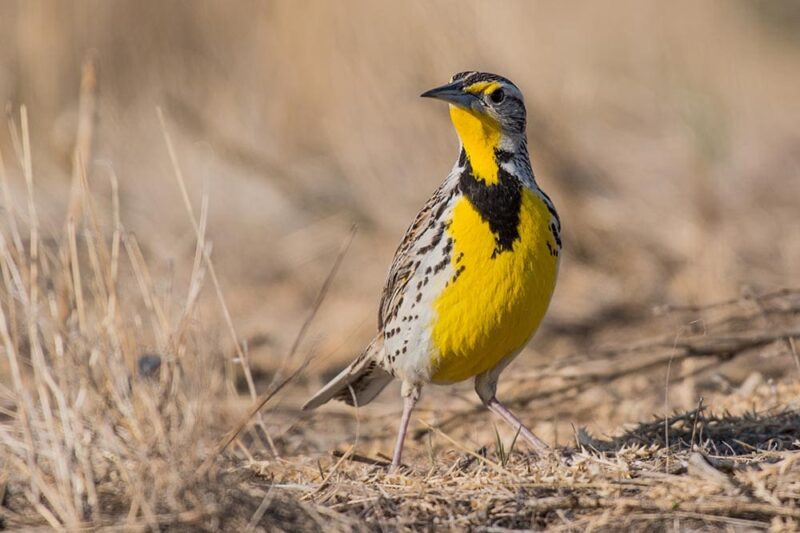
| Length: | 6.3 – 10.2 inches |
| Wingspan: | 16.1 inches |
The Western Meadowlark hardly looks like a blackbird, as it has a bright yellow belly and neck. The wings are also light colored with black spots, and it has a characteristic patch on the neck that looks like a necklace. It prefers grasslands, meadows, and wherever else it can forage for food on the ground.
4. Brewers Blackbird

| Length: | 7.9 – 9.8 inches |
| Wingspan: | 14.6 inches |
Brewers Blackbird is what most people expect to see when they hear the term blackbird. It’s a medium-sized bird with glossy black feathers and purple coloring on the head, though the females are brown all over. These birds are quite tolerant of humans and enjoy visiting parks and backyards.
5. Brown-Headed Cowbird
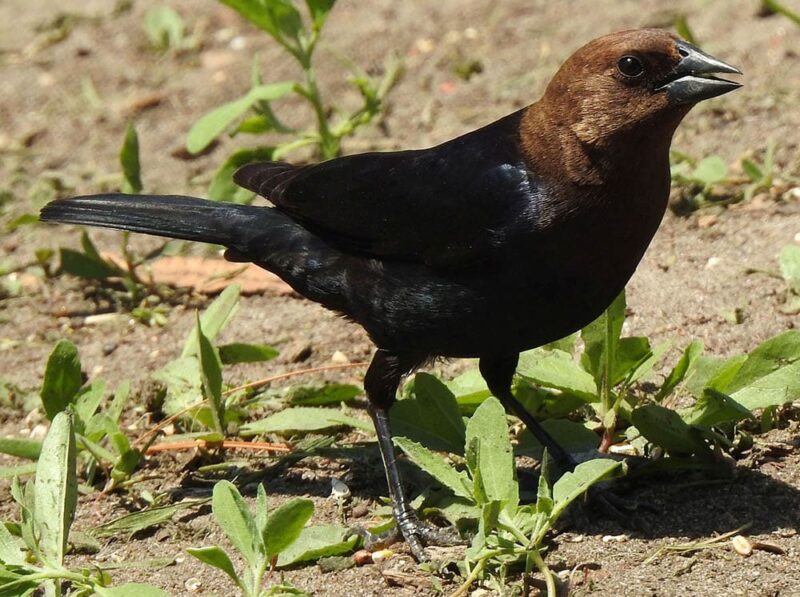
| Length: | 7.3 – 8.7 inches |
| Wingspan: | 14.2 inches |
The Brown-Headed Cowbird is extremely common in Idaho, making it likely that you can find one without even trying. It enjoys grasslands and wooded areas, especially near grazing animals, and you can also find them at backyard feeders. It has a black body, but as the name suggests, it’s brown above the neck.
6. Bullock’s Oriole

| Length: | 6.7 – 7.5 inches |
| Wingspan: | 14.6 inches |
Bullocks Oriole is a colorful blackbird that you can see in Idaho as early as March, and it will usually stay until around September. These birds have bright orange bellies and heads with black markings on their faces and black wings with white patches. Many people successfully lure these birds to their backyards with sugar water, fruits, and jelly.
7. Yellow-Headed Blackbird
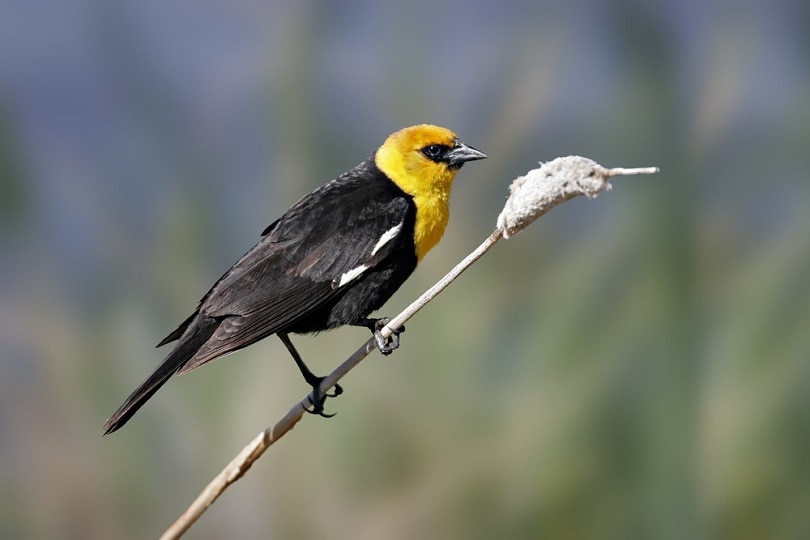
| Length: | 8.3 – 10.2 inches |
| Wingspan: | 16.5 – 17.3 inches |
The Yellow-Headed Blackbird is just what you might expect: a medium-sized bird with a yellow head and chest with a black body. It’s easiest to spot from March to October, when you can see it in fields looking for food.
8. Bobolink Blackbird

| Length: | 5.9 – 8.3 inches |
| Wingspan: | 10.6 inches |
The Bobolink Blackbird male has a unique appearance with a black face and belly. The back of the head has a pale-yellow patch that almost looks like dyed hair. The wings are also black, with white patches. You will usually see these birds in grasslands during breeding and around marshes and coastal areas at other times. Unfortunately, there are fewer Bobolinks every year, with a decline in the population by 65% since 1966.
9. Common Grackle

| Length: | 11 – 13.4 inches |
| Wingspan: | 4.2 – 18.1 inches |
The Common Grackle is a near-threatened species in Idaho, but you can still spot it in the eastern part of the state during the summer months. It has a black body with a blue head and a long tail. It prefers to eat seeds and crops, especially corn, but it eats almost anything, including garbage.
10. Great-Tailed Grackle

| Length: | 15 – 18.1 inches |
| Wingspan: | 18.9 – 22.8 inches |
The Great-Tailed Grackle is a rare bird in Idaho, so it’s a good challenge for bird watchers. The males are iridescent black with yellow eyes, and the females are dark brown with long legs. These birds enjoy being where humans are, and their diet consists primarily of greens, seeds, and fruits, but they will eat many insects, including snails and spiders. These birds often walk around below feeders, waiting for scraps to fall to collect them.
11. Rusty Blackbird
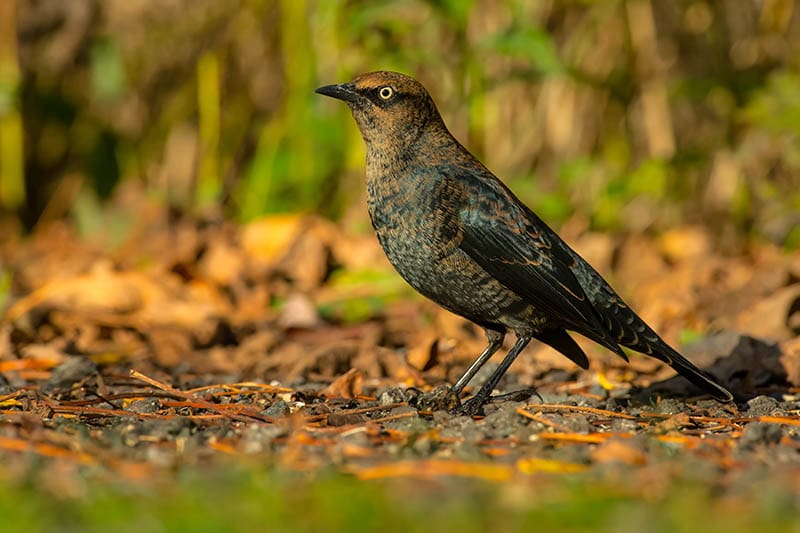
| Length: | 8.3–9.8 inches |
| Wingspan: | 14.6 inches |
The Rusty Blackbird is a vulnerable species in Idaho, but sightings have increased over the last several years. The males have dark and glossy black feathers during the mating season that fade to a rusty color in winter, giving the bird its name. Look for these birds around swamps, marshes, and bogs, where they will likely be eating insects and small fish.
12. Scott’s Oriole

| Length: | 9.1 inches |
| Wingspan: | 12.6 inches |
Both the male and female Scott’s Oriole have yellow bodies, but the male has a black head and chest with dark wings, and the female has paler colors over the head and chest. These birds like arid areas and steep slopes where they can perch and sing before dawn. They primarily feed on insects, but you can lure them to your backyard with sugar water and oranges.
13. Baltimore Oriole
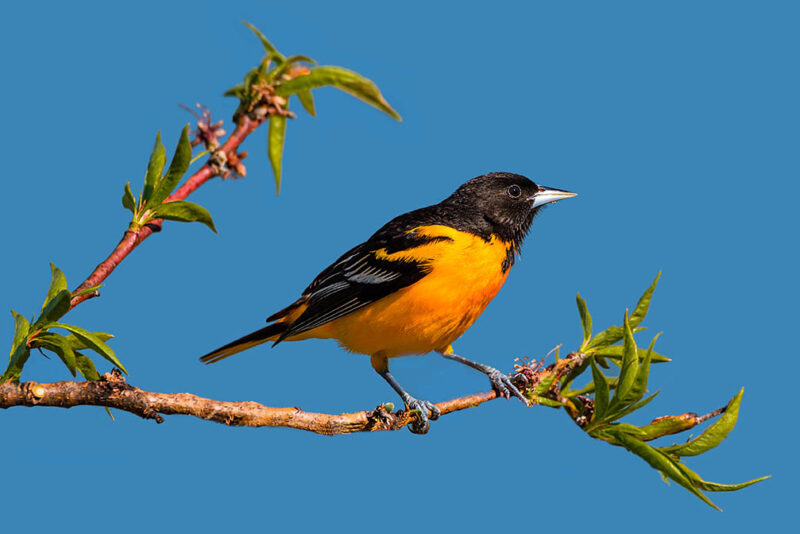
| Length: | 6.7 – 7.5 inches |
| Wingspan: | 9.7 – 11.8 inches |
The Baltimore Oriole is an accidental species in Idaho, but a birdwatcher spotted it in the state as recently as 2018. It has a bright orange body with a black head and black wings with white patches or bars. These birds are about the size of American Robins and usually stick to the forest edge and river banks to hunt for food.
14. Orchard Oriole
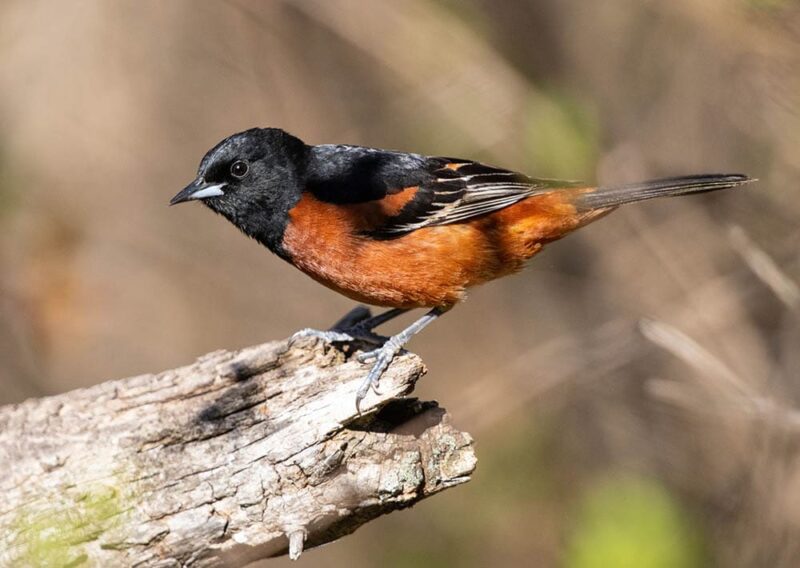
| Length: | 5.9 – 7.1 inches |
| Wingspan: | 9.8 inches |
The Orchard Oriole is another accidental species that people occasionally spot in the state. Unfortunately, the last sighting of an Orchid Oriole in Idaho was in 2013, so it’s been quite a while. Look for these birds around riverbanks, where they like to build hanging pouch nests. These birds like to eat insects, especially ants, but they also enjoy dried nectar from flowers.
15. Hooded Oriole
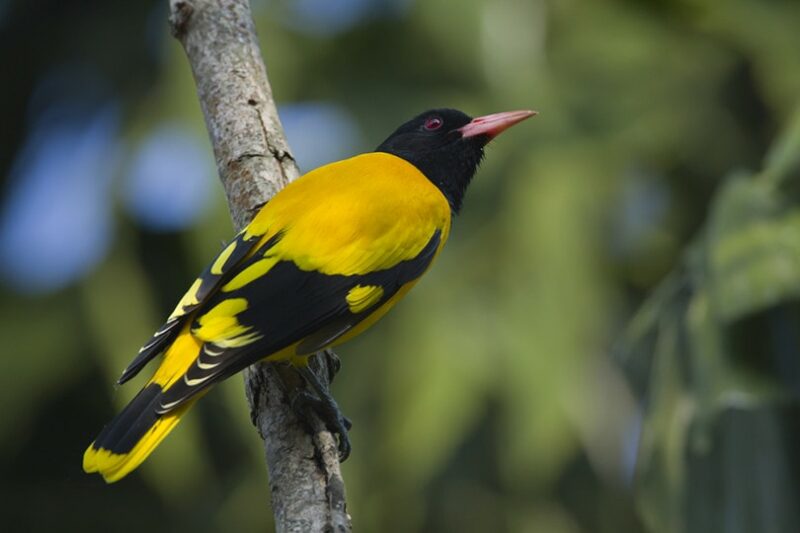
| Length: | 7.9 – 9.8 inches |
| Wingspan: | 14.6 inches |
The Hooded Oriole is an accidental species, with the most recent sighting occurring in 2015. The bodies of this bird can range from bright orange to yellow, almost like the Baltimore Oriole, but the pattern is slightly different. This bird has a black throat and back, though the female will have grey highlights instead of black. These birds prefer open areas near palm trees, where they build their hanging nests.
Attracting Black Birds to Your Property
- Grow fruiting bushes and trees in your yard, like blackberries, raspberries, blueberries, and strawberries.
- Add a birdbath to your property, and keep the water fresh.
- Nectar feeders are a great way to attract many different kinds of Orioles.
- Add feeders to your property that contain cracked corn, millet, and peanuts.
- Let grass on your property grow tall to provide a place for the blackbirds to hunt.

Final Thoughts
While a few blackbird varieties on this list are quite rare, many others are common and easy to spot. If you are a beginner, we recommend starting with the European Starling or the Red-Winged Blackbird for an easy target before moving on to one of the rarer varieties. You can also take a few steps to attract the blackbirds to your yard to minimize your effort. Feeders with sunflower seeds are great for large blackbirds, while sugar water and jam are effective at attracting Orioles.
Featured Image Credit: Butterfly Hunter, Shutterstock
Table of Contents
- Top 15 Types of Black Birds in Idaho:
- 1. European Starling
- 2. Red-Winged Blackbird
- 3. Western Meadowlark
- 4. Brewers Blackbird
- 5. Brown-Headed Cowbird
- 6. Bullock’s Oriole
- 7. Yellow-Headed Blackbird
- 8. Bobolink Blackbird
- 9. Common Grackle
- 10. Great-Tailed Grackle
- 11. Rusty Blackbird
- 12. Scott’s Oriole
- 13. Baltimore Oriole
- 14. Orchard Oriole
- 15. Hooded Oriole
- Attracting Black Birds to Your Property
- Final Thoughts
About the Author Ed Malaker
Ed Malaker is a veteran writer who contributes to a wide range of blogs covering information on computer programming, pets, birding, tools, fitness, guitars, and optics. Outside of writing, Ed is often found working in the garden or performing DIY projects in the house. Ed is also a musician, spending his time composing music for independent films or helping people repair their guitars.
Related Articles:
Monocular vs Telescope: Differences Explained (With Pictures)
10 Types of Hummingbirds in Arkansas (With Pictures)
8 Types of Hummingbirds in Nebraska (With Pictures)
5 Types of Hummingbirds in Idaho (With Pictures)
3 Types of Hummingbirds in Mississippi (With Pictures)
8 Types of Hummingbirds in Kansas (With Pictures)
5 Types of Hummingbirds in West Virginia (With Pictures)
5 Types of Hummingbirds in Ohio (With Pictures)
